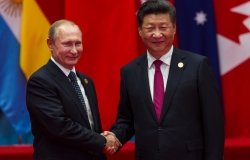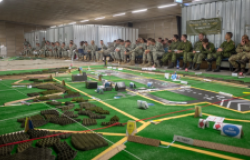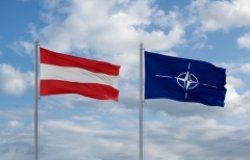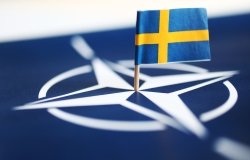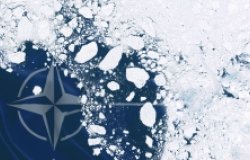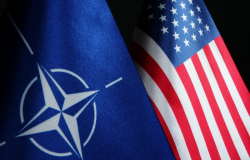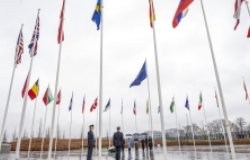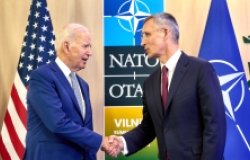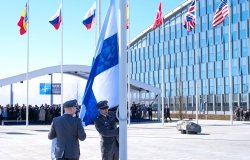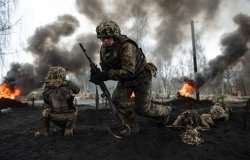Finland’s Remarkable First Year in NATO
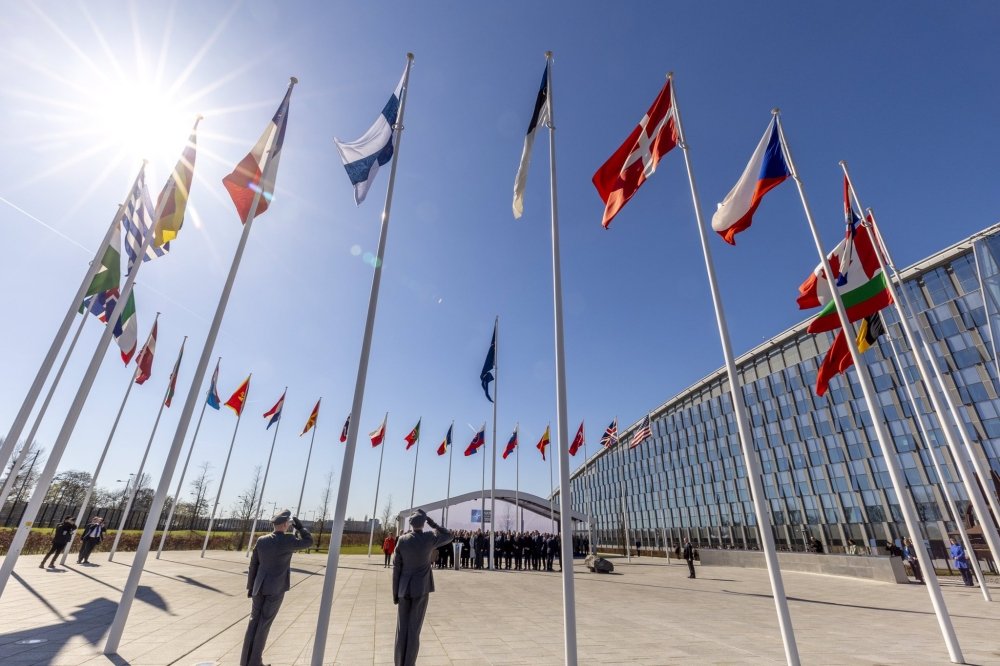
Twitter/X - Finland at NATO
April 4, 2024 marks not only the 75th anniversary of NATO as a whole but also the one year anniversary of Finland’s full membership in the Alliance. Finland applied to join NATO–alongside its neighbor Sweden–in May 2022, less than 3 months after Russia’s brutal invasion of Ukraine, following an unprecedented groundswell of public support. This historic shift from a policy of military non-alignment with a credible national defense and strong bilateral defense cooperation–primarily with countries such as Sweden and the United States–led Finland to become the 31st member of the NATO Alliance a short 11 months after applying. A net contributor to the defensive alliance, Finland is already contributing to NATO with its Arctic capabilities, resilience, and highly advanced military. It has been a remarkable first year for Finland in NATO; the country has weathered significant internal changes and external shocks. Despite these challenges, Finland is more secure now as a member of the NATO Alliance, and NATO is already benefiting from Finland’s membership.
An Unforgettable Year for Finland
To say Finland has had an eventful year would be an understatement. Finland has been faced with several major challenges in its first year as a NATO Ally and has shown itself capable of responding to them individually and in concert with allies. A reportedly Chinese-owned vessel damaged a vital undersea gas connector between Estonia and Finland and two telecommunication cables. As the investigation continues, increased attention is being paid to the importance of securing undersea infrastructure, with NATO Secretary General Jens Stoltenberg offering support and vowing a “united and determined response." Shortly after the Balticconnector pipeline was damaged, a surreptitious uptick in migrants arriving along its shared border with Russia, apparently encouraged by Russian authorities. Russia has weaponized migrants in the past, notably during the Belarus-European Union Migrant Crisis in 2021. All border crossing points between Finland and Russia have been closed since late 2023 (except one railway crossing for cargo) and will remain closed until at least mid-April. This border closure is reflective of the dramatic shift in the Finland-Russia relationship since Russia invaded Ukraine.
Meanwhile, on the domestic front Finland has seen major changes in the last year, with a new Prime Minister leading one of the most conservative governing coalitions since the end of World War II. Finns also voted for a new President in February, with Alexander Stubb, a well-known public figure who has held multiple senior jobs including Prime Minister, emerging victorious. He replaced long-time President Sauli Niinistö, who defined much of Finland’s foreign policy for more than a decade, steering the country through multiple crises from Russia’s invasion of Crimea in 2014 to the 2020 pandemic to Russia’s second invasion of Ukraine. Despite the changes in Finnish leadership, support for NATO and Ukraine remain largely unchanged, with multiple successive packages of aid for Ukraine released in the last year. Finland has contributed more than €2.5 billion to support Ukraine over 22 aid packages and remains the ninth largest contributor in aid as a percentage of GDP, according to the Kiel Institute’s tracker. To underscore Finland’s unwavering support for Ukraine, the day before its one year anniversary in NATO, Finnish President Stubb announced in Kyiv a 23rd aid package of €188 million and signed a 10-year agreement on security cooperation.
Finland: From Partner to Ally
Finland has been a NATO partner since 1994. Since its status changed to a full ally last year, Finland is already showing itself to be a capable ally. NATO remains popular in Finland, with approximately 89% of the population supporting the Alliance. The Finnish government is hitting NATO’s 2% benchmark of spending on defense and anticipates hitting 2.3% in 2024, its contributions to Ukraine not included. Finland has one of the largest wartime strengths in NATO with 280,000 troops, and around 900,000 people out of a total population of 5.5 million have had military training. In historical terms, Finland has a fighter per capita ratio equivalent to ancient Sparta. As a new ally, Finland participated in a series of firsts in the last year–its first NATO Defense Ministers meeting, NATO Foreign Affairs Meeting, and its first NATO Summit. These are critical first steps into deepening Finland’s cooperation with NATO.
Finland is already keen to showcase its capabilities and know-how. Hosted by the Nordic countries, Finland, Norway and Sweden, 20,000 soldiers began exercises as part of the Steadfast Defender series, NATO’s largest military exercise in decades. Finland participated in cyber defense training with the United Kingdom, Norway, Sweden and the United States in Rovaniemi during Exercise Nordic Response 24. For the last year, Finland has emphasized the necessity for Sweden’s NATO accession to conclude. Finland’s full potential as a NATO Ally has yet to be realized due to the delay of its sister–Sweden–in joining the alliance. Sweden is Finland’s closest ally in security and defense policy, and together they dramatically reshape the Alliance approach to the high north and the Baltic Sea region. Finland has stepped up its participation in NATO’s Baltic Air Policing since joining NATO. Finland’s Air Force led the Arctic Challenge 2023 exercises, consisting of 150 aircraft. It was also announced the Finnish navy and air force would participate in NATO peacetime missions, with Defense Minister Häkkänen stating: “Finland’s participation in NATO’s collective peacetime missions and the organisation of NATO exercises in the territory of Finland, for example as part of Steadfast Defender 24, are concrete examples of what Finland’s membership in NATO means in practice.”
Finland has one of the largest wartime strengths in NATO with 280,000 troops, and around 900,000 people out of a total population of 5.5 million have had military training. In historical terms, Finland has a fighter per capita ratio equivalent to ancient Sparta.
Much attention has been paid to how Finland’s NATO membership dramatically extends the Alliance’s border with Russia, a 1,340km (833 miles) border running primarily through rural and forested areas. Russian President Vladimir Putin has pledged to deploy more Russian troops to northwest Russia along the border with Finland. In turn, Finland is reinforcing key bases in its north, namely in Ivalo and Sodankyla. Finland’s NATO membership necessitates a dramatic change to the way NATO approaches its northern flank. Finland’s frontline role allows it a unique specialization of the Nordic countries in NATO. It offers geostrategic access for the Alliance to defend the Baltic Sea and Gulf of Bothnia, as well as brings the Alliance closer to critical Russian strongholds in the St. Petersburg and the Kola Peninsula. Now, with all of the Nordics in NATO, the Alliance has an opportunity to make its northern flank a lynchpin of its defense and deterrence from further Russian aggression.
Although separate from the multilateral NATO alliance, it is worth highlighting another major milestone in the last year: Finland and the United States signed a bilateral Defense Cooperation Agreement (DCA). This agreement will have profound implications for the alliance and to Finland’s broader defense and security. The DCA clarifies US troop, equipment, and base access, in the event Finland requests US or NATO support. Finland’s decision in 2021 to purchase 64 new F-35As to replace its aging F/A-18 fighters–prior to its NATO membership–further drives home Finland’s capabilities as an interoperable Ally with the United States and the Alliance as a whole. The first F-35a fighters are expected to arrive in 2026, with all 64 in the country by 2030. This will dramatically upgrade Finland’s air capabilities and enhance NATO interoperability.
Finland at Year Two in NATO
What will year two in NATO look like for Finland? As a new member, Finland has been extraordinarily forward leaning and is quickly assimilating itself into Alliance structures, customs and formats. Finland has dramatically increased its knowledge on nuclear deterrence in a remarkably short timespan. The ongoing Russian invasion of Ukraine, now in its third year, will remain a grave security threat for NATO and Finland. As talks of Russia being able to reconstitute its armed forces within 2-5 years and its potential to target Western bases supporting Ukraine, the next few years for Euro-Atlantic security are full of uncertainty.
In terms of next steps in the Alliance, the question of whether Finland will host a NATO Centre of Excellence remains unanswered. The current government of Finland suggested they were open to welcoming a specialized NATO center–there are 28 accredited today across the Alliance (2 are pending accreditation) that focus on various elements of security from energy to strategic communications. NATO’s Defence Innovation Accelerator for the North Atlantic (DIANA) announced two new test centers and an accelerator in Espoo and Oulu. More announcements on additional centers coming to Finland will be expected in the years ahead, further enmeshing the Nordic country in the defensive alliance.
It was never a certainty that Finland would join NATO. Its historic decision to join the alliance reflects a deep concern over Russia’s aggressive actions against its neighbors. Finland–alongside Sweden–have extremely capable militaries that result in a safer, more secure Alliance. Finland’s membership in NATO is a boon for the United States and the alliance as a whole. Charting Finland’s evolution from partner to ally shows the profound impact Russia’s invasion of Ukraine in February 2022 has had on the security environment in Europe. Transatlantic security institutions, chiefly NATO, remain invaluable for a secure, stable, and prosperous Euro-Atlantic area. Finland’s historic decision to join NATO and its whole-hearted participation over the last year as a full member reflects the Alliance’s enduring purpose.
About the Author


Global Europe Program
The Global Europe Program is focused on Europe’s capabilities, and how it engages on critical global issues. We investigate European approaches to critical global issues. We examine Europe’s relations with Russia and Eurasia, China and the Indo-Pacific, the Middle East and Africa. Our initiatives include “Ukraine in Europe” – an examination of what it will take to make Ukraine’s European future a reality. But we also examine the role of NATO, the European Union and the OSCE, Europe’s energy security, transatlantic trade disputes, and challenges to democracy. The Global Europe Program’s staff, scholars-in-residence, and Global Fellows participate in seminars, policy study groups, and international conferences to provide analytical recommendations to policy makers and the media. Read more
